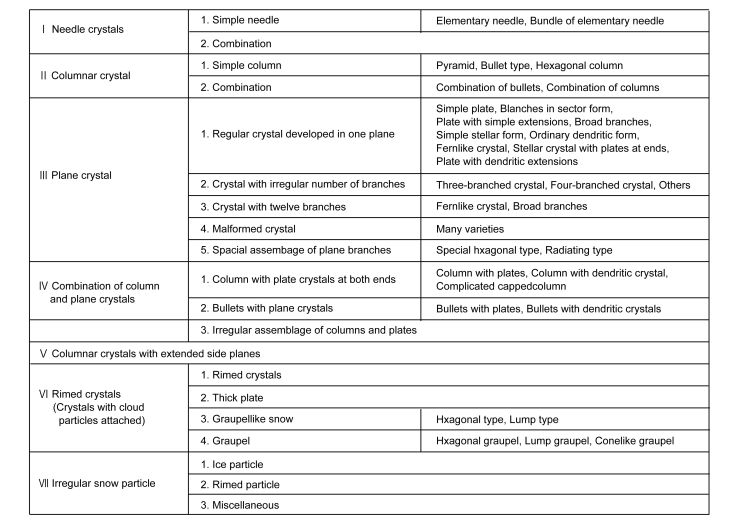Snow Crystals in Hokkaido
Introduction
In Hokkaido, Japan, it begins to snow when the winter monsoon is becoming strong. The temperature gradually lowers every day and it becomes less than 0°C all day. So, the snow leaves on the ground without melting. I consider this the same process anywhere in the world if it is the temperate zone district in a high latitude area. We usually call a snowy state as if "powdery snow", "large snowflakes", or "sleet". But I can recognize a figure of a snow crystal when I enlarge it with a microscope even at the time of any kind of snow.
It is said that a snow crystal does not have a thing of form same for two because the form is delicately different when I observe it with a microscope. Therefore, there is a fresh surprise whenever I watch another one. However, I think there may be completely a crystal of the same form when I see innumerable snow falling in sequence from the sky. Because a snow crystal such as a minute glasswork continues to fall unlimitedly as far as the eye can see.
This site presents photographs of snow crystals taken in Hokkaido and photographs of snow crystals taken after they were preserved as replicas. I want to introduce one part of its mysterious figure.
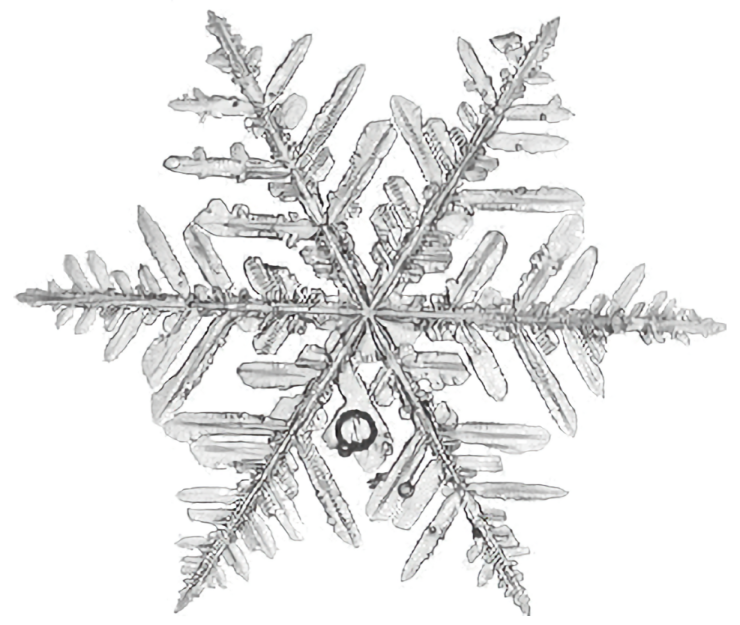
Classification of snow crystals
It is known that the form of a snow crystal changes to climatic conditions when it falls. In other words, it is changed mainly by the temperature and the humidity. Dr. Ukichiro Nakaya who clarified it described that "the snow crystal is a letter sent from the sky" and showed that a state of the atmosphere from the upper air at that time to the surface of the ground was ticked away in form and a design of a snow crystal 1).
In his study, Dr. Nakaya repeated observation in Sapporo City and Mt. Tokachi and took a picture of more than 3,000 pieces of natural snow crystals. Based on the observation, he made a classification list of snow crystals which classified snow crystals as seven kinds.
In this classification, snow crystals are classified into "Needle crystal", "Columnar crystal", "Plane crystal", "Combination of column and plane crystals", "Columnar crystal with extended side planes", "Rimed crystal", and "Irregular snow particle". In the later study, snow crystals seem to be classified more finely 2), 3). But I think to call snow crystals along his classification in this site because a study of Dr. Nakaya was carried out mainly in Hokkaido.
In the above table, I showed only the name of snow crystals which came out to his classification. It may be difficult to imagine the form of each snow crystal. So, I hope to look at the image figures indicated in his report, if you want to know them preciously. However, it will be able to understand in this table that a regular form of snow crystal which we have an image generally is only one part of snow crystals that falls on the ground innumerably.
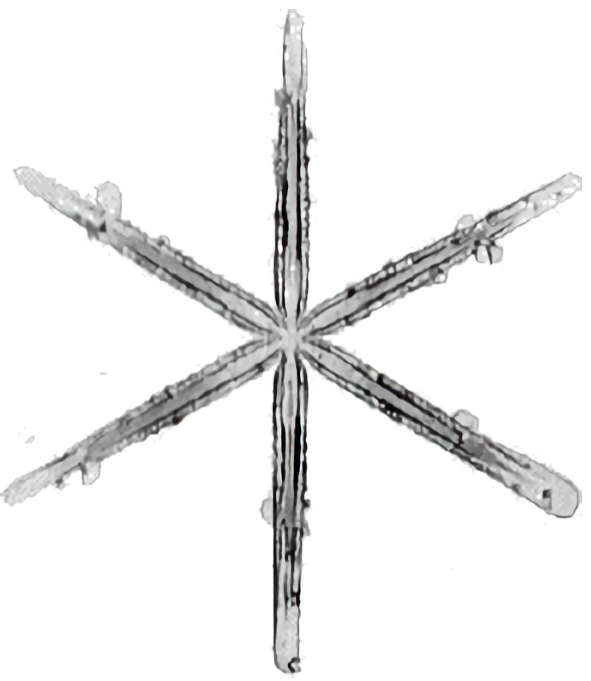
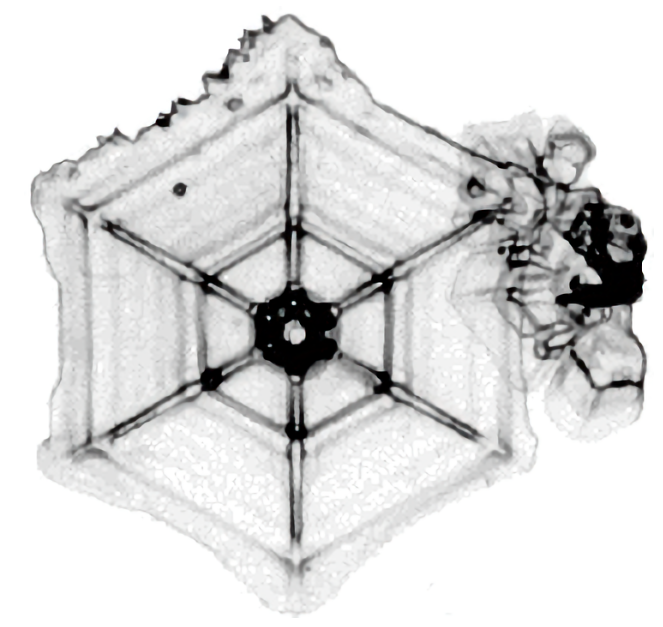
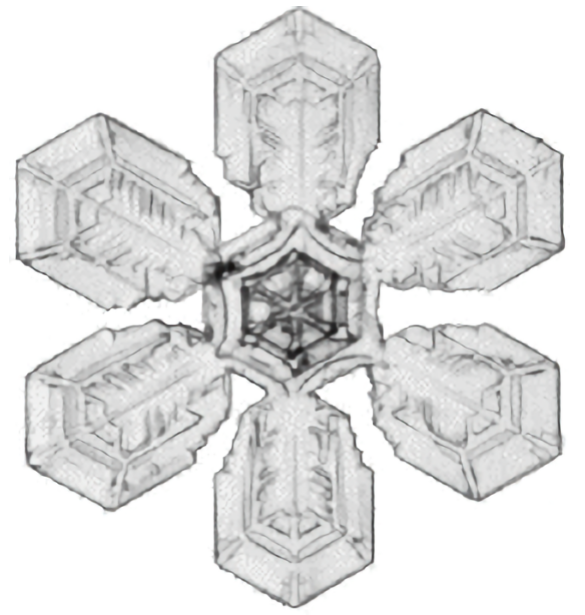
Simple stellar form
Simple plate
Branches in sector form
Climatic conditions of winter and snowfall in Hokkaido
When it snows in Hokkaido, it is brought in the western area by the winter monsoon type, and in the eastern area by the low-pressure type. In this way, by the difference of a snowy model to fall, there is the case that the kinds of snow crystals observed by an area are different.
For example, in the western area of Hokkaido, line-shaped snow clouds flock with the winter monsoons in sequence and bring snow. In this area, rimed crystals, that is a lot of cloud particles were attached-shaped snow, and hail-shaped snow are mainly observed. Otherwise, in the area of Daisetsuzan National Park (the central area of Hokkaido), I can observe beautiful plane crystals that have a large smooth surface. These beautiful snow crystals are said to be produced in the snow clouds generated as the winter monsoons pass over the central mountain ranges after they have dumped snow in the western area 4). That is snowfall of the winter monsoon type.
In contrast, fine weather continues day after day in the eastern area of Hokkaido in winter. The reason is that most of the snow clouds disappear while the winter monsoons reach there. In the eastern area, a large quantity of snow is often brought when the low pressure with the front passes by. It is known that snow crystals which shape simple hexagonal plates or simple columns are mainly formed in the clouds that distribute to the north side of the warm front 5). This is the reason the kind of snow crystals observed on the ground is different from that of the western or the central area.
In addition, I meet with really various snowfalls when I repeat observations of snow crystals. I was surprised to meet with the scene where needle crystals fell suddenly from the dusky snow cloud that wrapped up the sky. I have met the mysterious scene where large fernlike crystals fell under the stars shining night sky. And I admired falling without being broken when I found the dendritic crystal which grew up greatly in a blizzard of low pressure.
In such a weather phenomenon, I am made to realize that there is a lump of various air in the atmosphere and they are changing. Therefore, I think that repeating observation in various areas is more important than going to one area where the beautiful crystals are falling to observe every kind of snow crystals falling in Hokkaido.
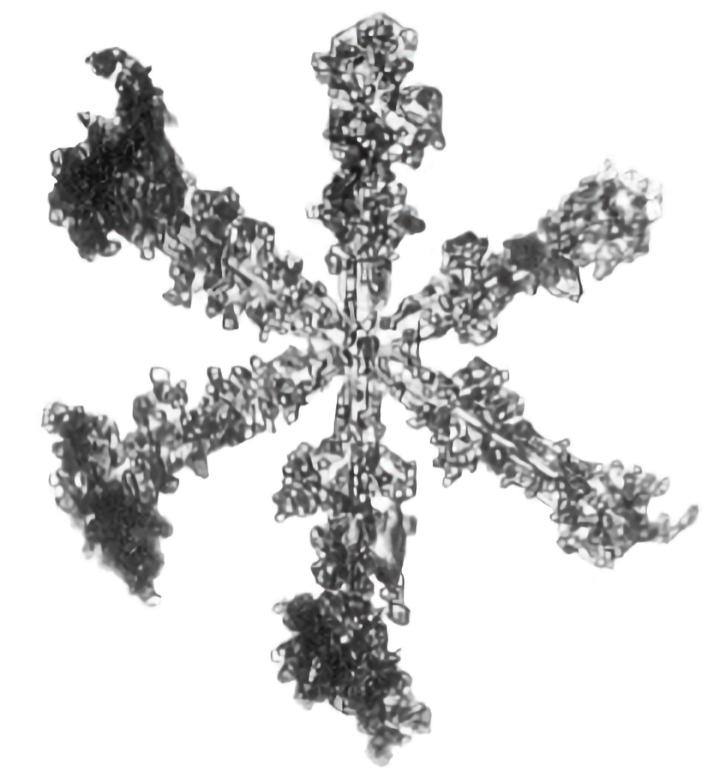
Rimed crystal
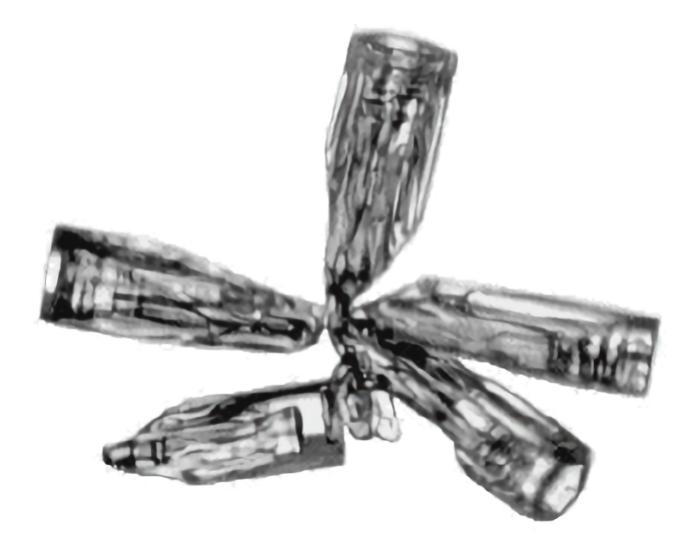
Combination of bullets
About the form of snow crystals
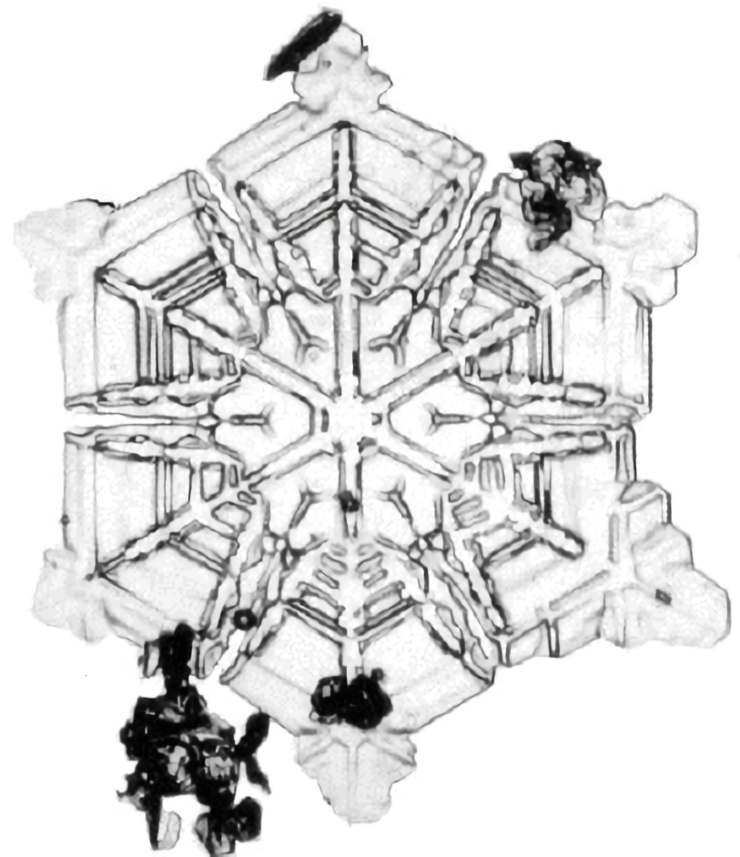
The crystal developed in one plane
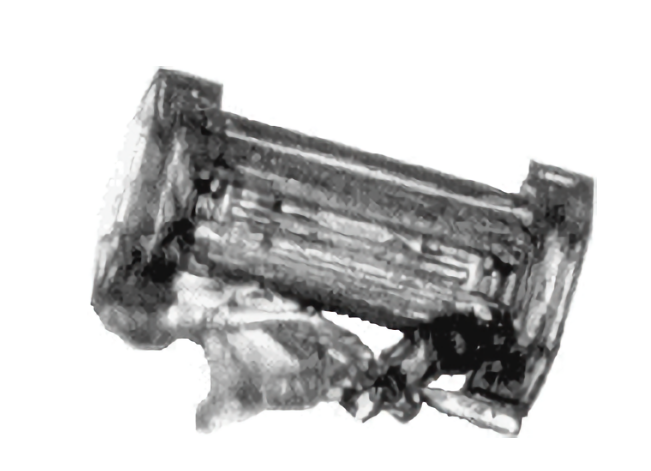
Column with plates
The regular crystal developed in one plane is very beautiful because the symmetry form is not able to be considered as a natural product. Those crystals are known that the shapes are hexagonal columns that consist of two pieces, that is two basal surfaces and six cylinder surfaces. This two-part composition causes interesting shape variations in snow crystals.
For example, when the growth of the cylinder surface is fast, it grows up in the plane crystals such as the simple plate or the fernlike crystal. Otherwise, it grows up to a slim crystal when the growth of the basal surface is fast, such as the needle crystal or the columnar crystal. Whether growth of which surface is fast seems to change by the temperature when it grows up.
Why the growth direction of a crystal changes by the temperature is not mentioned here, but this is the crystal habit change of snow crystals. About this habit change, it is known that the shape of snow crystals changes 0°C > plane > −4°C > columnar > −10°C > plane > −22°C > columnar 6). There are three changing points of the temperature.
By this crystal habit change, if a snow crystal steps over the temperature of the habit change point when it falls on the ground, it grows up in the form of both the column and the planes combined. The form difference by such a crystal habit change is also seen in frost crystals as well as snow crystals. I introduce the frost crystals on page 4. See the various crystals on later pages.
Sometimes, I find a small hexagonal plane existing in the center of a plane snow crystal. Such a crystal is known that it is consist of two pieces of planes that are formed both basal surfaces of the small hexagonal column have developed. Therefore, it should be like a "H" structure when I observe the crystal from the side. This type of plane crystal of snow is called "double plate type".
In addition, when I repeated the observation of snow crystals, it was noticed that some plane crystals have a small circular pattern in the center. It is known that this type of snow crystal is also the double plate type. But, in this case, the two planes are connected by the spherical structure derived from frozen water droplets that became the origin of the snow crystal 7), 8).
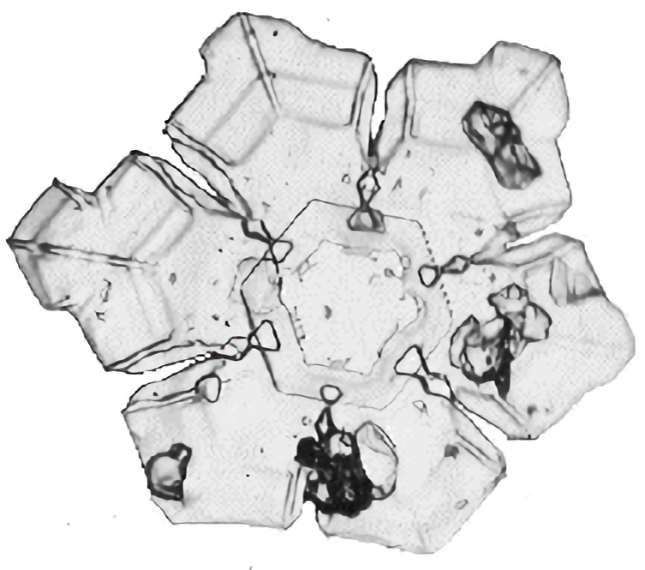
Branches in sector form
(Double plate type)
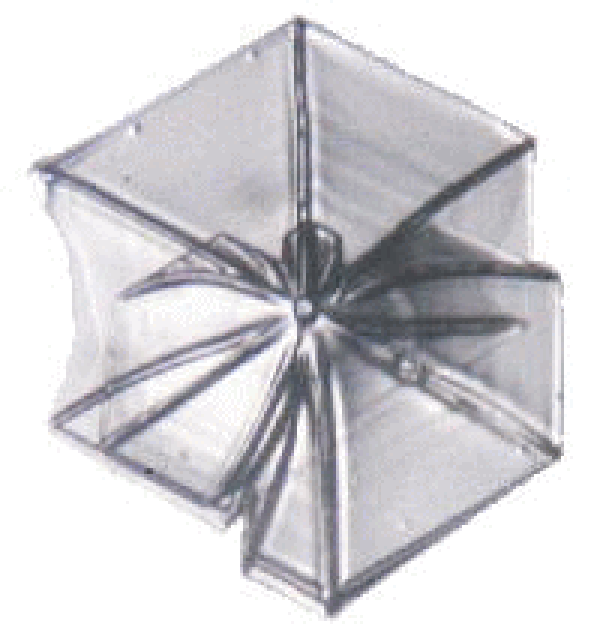
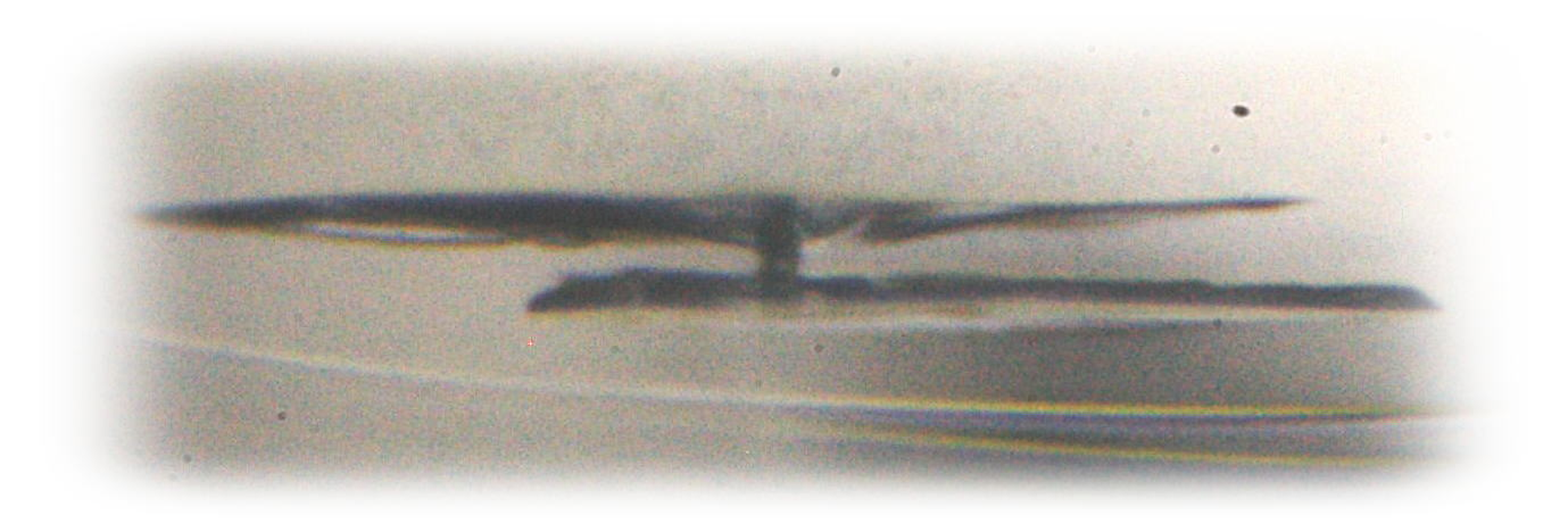
The plane snow crystal which has a small circular pattern in the center (Left: top view, Right: side view).
A crystal of twelve-branched also consists of two pieces of hexagonal planes but it is divided from the crystals of double plate type described above in classification. Twelve-branched crystals are classified as "Separated and multiple dendrite type" 3). This is because the formation mechanism of twelve-branched crystals is considered different from that of general double plate type of plane crystals.
Dr. Nakaya describes in his book that three pieces of hexagonal basic crystals were sometimes piled up and become a crystal of eighteen-branched. Exactly, there are reports that eighteen-branched or twenty-four-branched crystals were observed in the Arctic area of Canada 9), 10). So, it may be falling somewhere in Hokkaido.
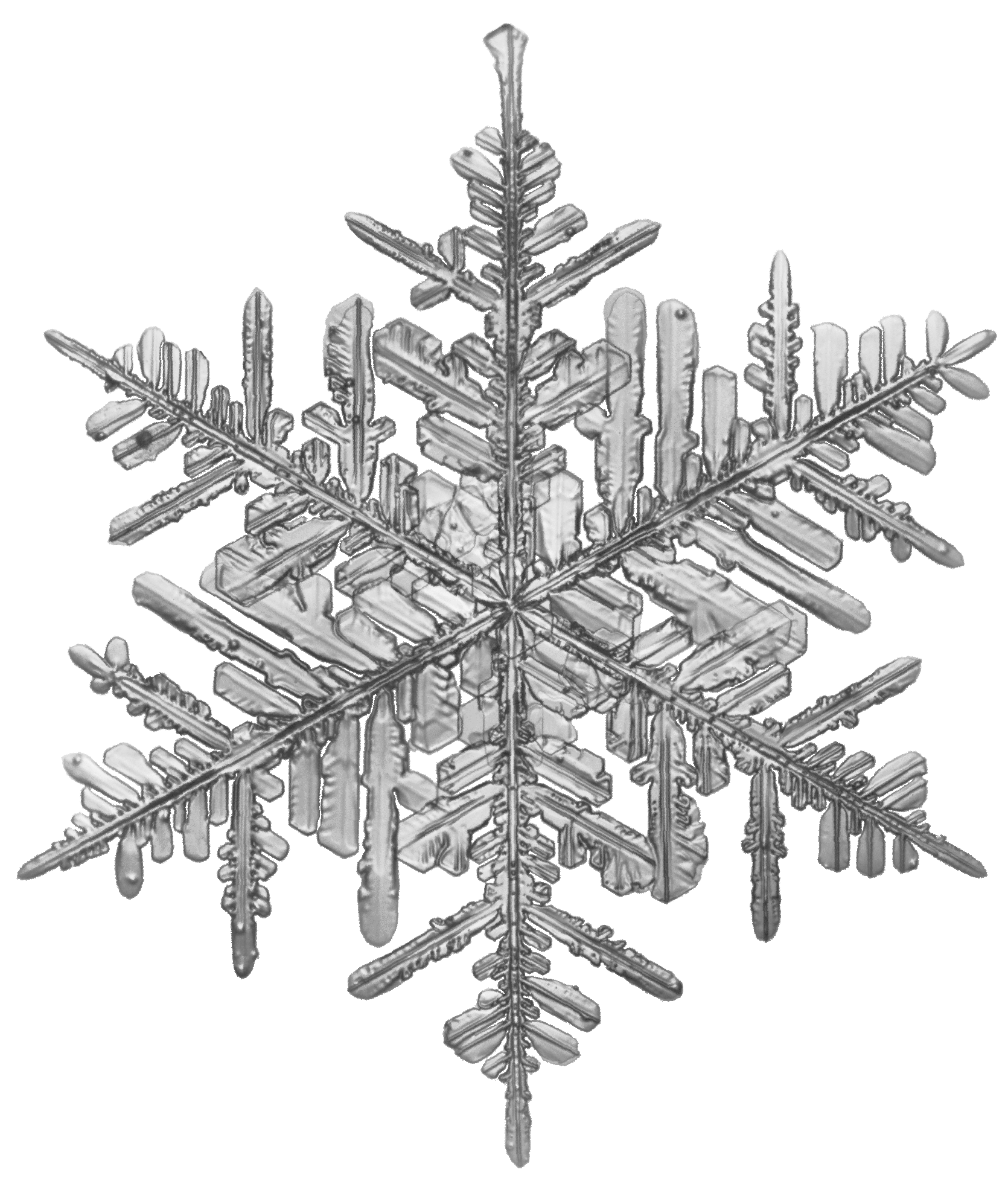
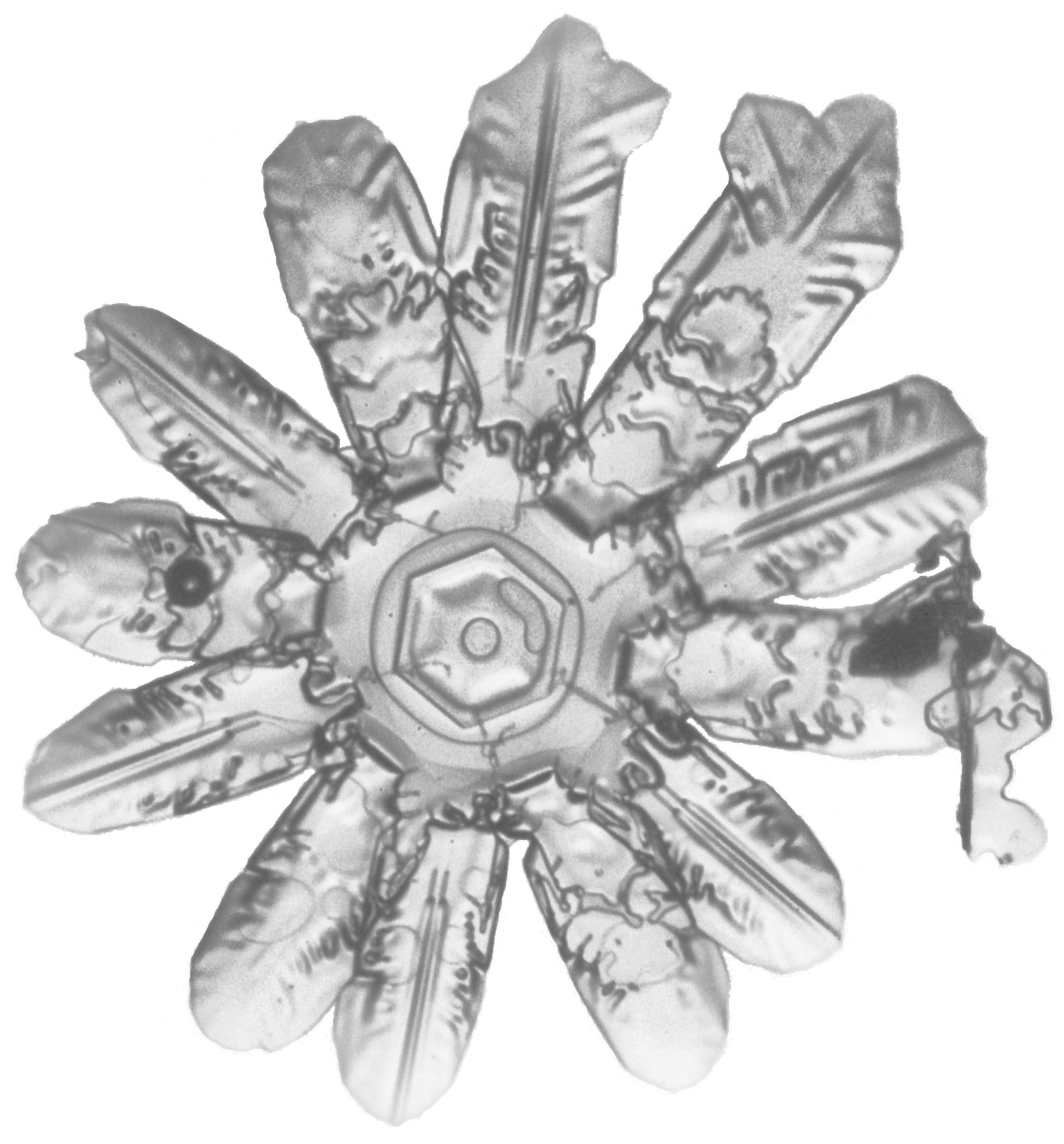
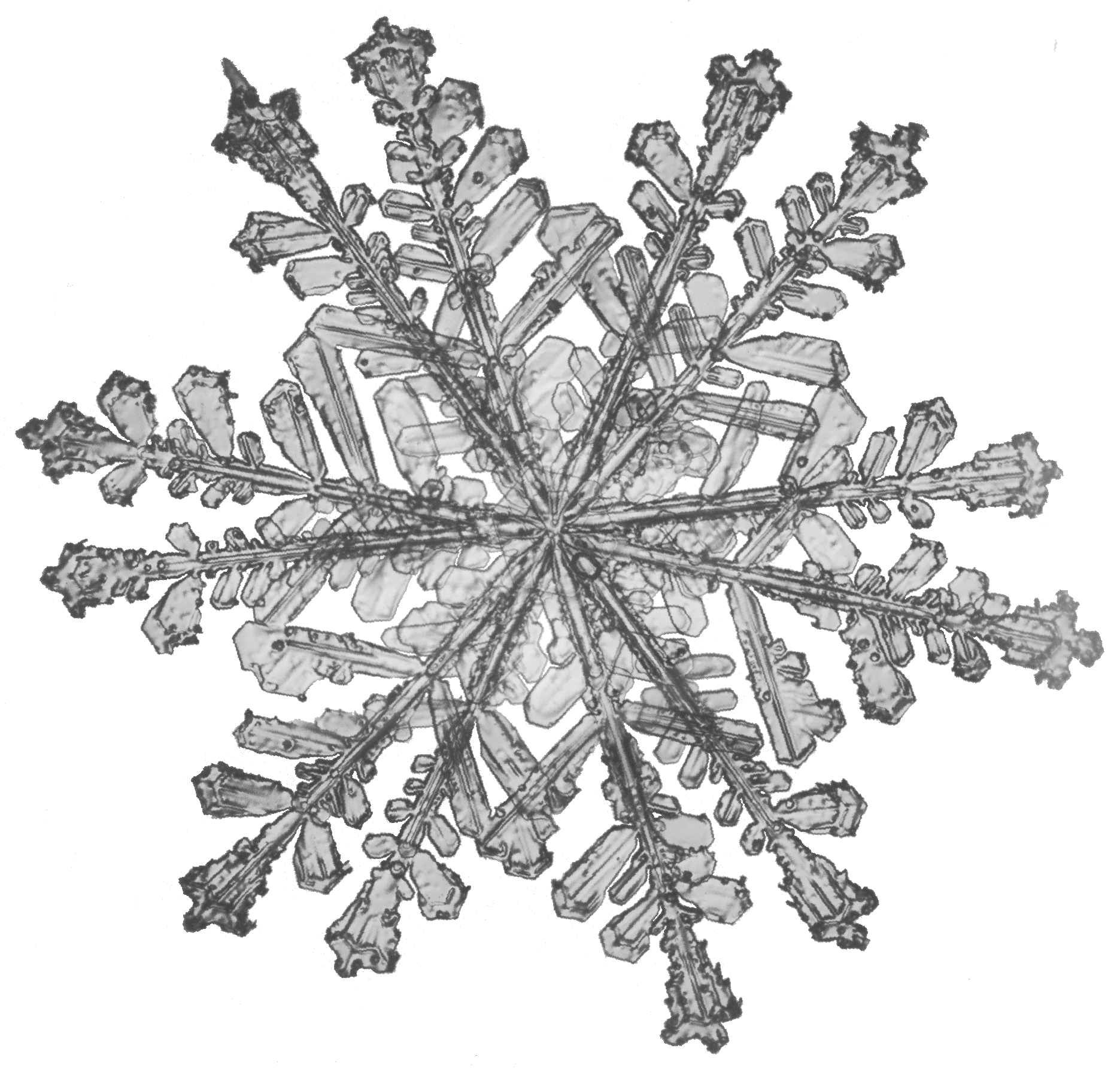
Fernlike crystal
Crystal with twelve broad branches
Crystal with twelve fernlike branches
References
1) Nakaya, U., 1954: Snow Crystals, Natural and Artifical. Harvard University Press, Cambridge, 510pp.
2) Magono, C. and C. W. Lee, 1966: Meteorological classification of natural snow crystals. J. Fac. Sci., Hokkaido Univ., Ser. Ⅶ 4, 321-335.
(http://hdl.handle.net/2115/8672)
3) Kikuchi, K., T. Kameda, K. Higuchi, A. Yamashita and Working group members for new classification of snow crystals, 2013: A global classification of snow crystals, ice crystals, and solid
precipitation based on observations from middle latitudes to polar regions. Atmos. Res., 132-133, 460-472.
(https://doi.org/10.1016/j.atmosres.2013.06.006)
4) 小林貞作,1983:雪の結晶 冬のエフェメラル.北海道大学図書刊行会,39pp.
5) 村上正隆,2005:降雪雲と降雪分布(降雪の気象).雪と氷の辞典,(社)日本雪氷学会監修,朝倉書店,59-80.
6) Kobayashi, T., 1967: On the variation of ice crystal habit with temperature. Physics of snow and ice: Proceedings, 1(1), 95-104.
(http://hdl.handle.net/2115/20288)
7) Auer Jr., A. H., 1971: Observation of ice crystal nucleation by droplet freezing in natural clouds. J. Atmos. Sci., 28, 285-290.
(https://doi.org/10.1175/15200469(1971)028<0285:OOICNB>2.0.CO;2)
8) Magono, C, 1973: Recent problems on the study of snow crystals. Geophysical Bulletin of Hokkaido Univ., 29, 33-50 (in Japanese).
(https://doi.org/10.5331/seppyo.21.186)
9) Kikuchi, K., 1987: The Discovery of eighteen-branched snow crystals. J. Met. Soc. Japan., 65, 309-311.
(https://doi.org/10.2151/jmsj1965.65.2_309)
10) Kikuchi, K. and H. Uyeda, 1998: Formation mechanisms of multibranched snow crystals (twelve-, eighteen-, twenty-four-branched crystals). Atmos. Res. 47-48, 169-179.
(https://doi.org/10.1016/S0169-8095(98)00061-1)
